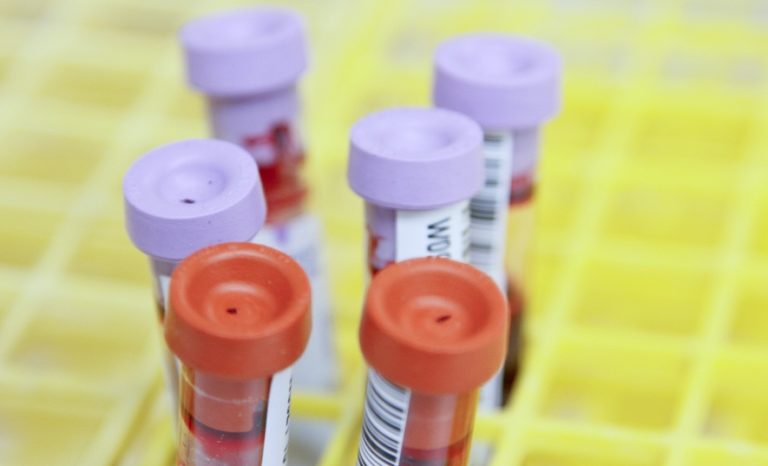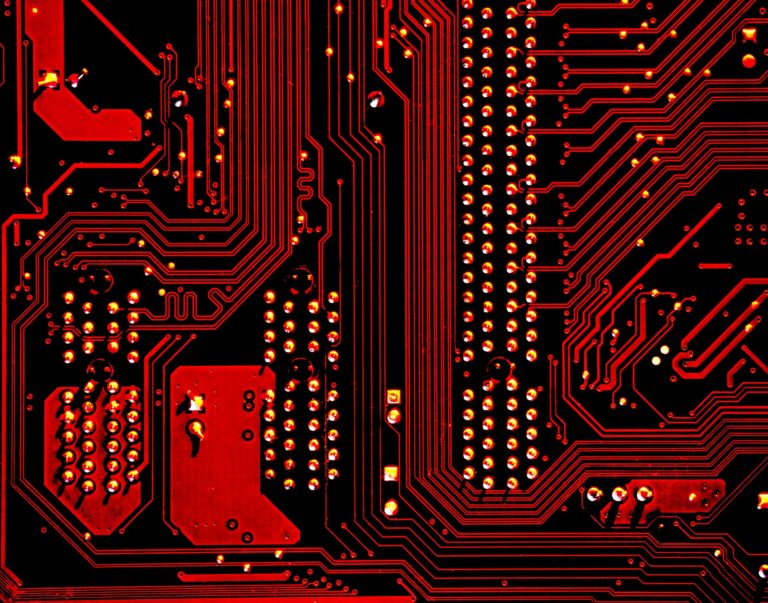Let’s understand the AI: “Artificial Intelligence (AI) can be described as the ability of a computer-controlled robot or digital device to perform tasks typically associated with intelligent beings. The concept is also applied to the project of designing structures endowed with the characteristic mental processes of humans, such as the capacity to think, to discover meaning, to generalize, or to learn from past experience “as per the Encyclopedia Britannica.
COVID-19 disease, caused by the SARS-CoV-2 virus, was detected in China in December 2019 and declared a global pandemic on 11 March 2020 by the WHO.
The new novel coronavirus, called SARS-CoV-2, had infected 735,560 patients worldwide as of March 30. The disease has caused more than 34,830 deaths to date, most often among older patients with underlying health problems, according to the World Health Organisation.
Artificial Intelligence (AI) is a potentially effective tool in fighting the pandemic COVID-19.
AI can be described as Machine Learning (ML), Natural Language Processing (NLP), and Computer Vision applications for present purposes to teach computers to use broad data-based models for pattern recognition, interpretation, and prediction.
Such functions can be useful in identifying (diagnosing), forecasting, and describing (treating) COVID-19 infections and assisting in controlling socio-economic impacts.
Since the occurrence of the pandemic, there has been a scramble to use and discover AI, and other data analytic tools, for these purposes.
The Artificial Intelligence (AI) tool has been shown to precisely predict which patients that have been newly infected with the COVID-19 virus would go on to develop severe respiratory disease.
Identifying vulnerable patients with AI:
The study has exposed the best indicators of future severity and found that they were not as expected.
Corresponding author Megan Coffee, clinical assistant professor in the Division of Infectious Disease & Immunology at NYU Grossman School of Medicine, said: “While work remains to further validate our model, it holds promise as another tool to predict the patients most vulnerable to the virus, but only in support of physicians’ hard-won clinical experience in treating viral infections.”
“Our goal was to design and deploy a decision-support tool using AI capabilities – mostly predictive analytics – to flag future clinical coronavirus severity,” says co-author Anasse Bari, PhD, a clinical assistant professor in Computer Science at the Courant institute.
“We hope that the tool, when fully developed, will be useful to physicians as they assess which moderately ill patients really need beds, and who can safely go home, with hospital resources stretched thin.”
Unexpected predictors:
Demographic, laboratory, and radiological findings of each subject
tested positive for COVID-19 at the two Chinese hospitals in January2020 was
recorded. Significant symptoms established over a week in a minority of
patients like pneumonia.
The researchers decided to find out whether AI techniques
could help predict precisely the patients with the virus will begin to develop
Acute Respiratory Distress Syndrome or ARDS, the fluid buildup in the lungs
that can be fatal in the elderly.
To do this, they have developed computer models that make
decisions based on data fed into them, with more data being considered by
programs being “smarter.” Specifically, at each step in a process,
the current study used decision trees that track series of choices between
options and model the possible consequences of choices.
The AI method found that changes in three functionalities –
levels of the liver enzyme alanine aminotransferase (ALT), documented myalgia,
and rates of haemoglobin – were most reliably predictive of subsequent serious
illness. The team reported being able to predict ARDS risk with an accuracy of
up to 80 percent, along with other variables.
ALT rates, which increase dramatically in patients with
COVID-19 as diseases such as hepatitis damage the – liver, were only marginally
higher, but still featured prominently in severity prediction. Furthermore,
deep muscle aches (myalgia) were much more frequent, and were related to higher
general inflammation in the body through past studies.
Eventually, higher levels of haemoglobin, were also
associated with subsequent respiratory distress. Can this be clarified by other
factors, such as unreported cigarette smoking, which has long been correlated
with elevated rates of haemoglobin?
Of the 33 patients at Wenzhou Central Hospital interviewed
on the smoking status, the two who reported having smoked, also reported that
they had quit.
Limitations of the study, say the authors, included the comparatively
small data set and the limited clinical severity of disease in the population
studied.
“I will be paying more attention in my clinical practice to
our data points, watching patients closer if they for instance complain of
severe myalgia,” adds Coffee.
“It’s exciting to be able to share data with the field in real time when it can be useful. In all past epidemics, journal papers only published well after the infections had waned.”
Actual and Potential Contributions of AI against COVID-19:
There are six areas where AI can contribute to the fight against COVID-19:
- Early warnings and alerts
- Tracking and prediction
- Data dashboards
- Diagnosis and prognosis
- Treatments, and cures
- Social control.
Early warnings and Alerts:
The case of BlueDot, the Canadian-based AI platform, has already become legendary. This shows that a fairly low-cost AI device (BlueDot was funded by a start-up investment of approximately US$ 9 million) can out-predict human outbreaks of infectious disease.
According to accounts, BlueDot expected the outbreak of the infection at the end of 2019 and released a warning to its customers on 31 Dec 2019, before the World Health Organization on 9 January 2020 did.
A note was also released by researchers working with BlueDot in the Journal of Travel Medicine on 14 January 2020, where it identified the top 20 destination cities where Wuhan passengers will arrive.
Although BlueDot is undeniably a powerful device, there is some distortion and some undervaluing of the role of human scientists in much of the attention it has earned.
Indeed, though BlueDot sounded an alarm on December 31, 2019, another AI-based application, HealthMap, sounded an alarm much earlier on December 30, 2019 at Boston Children’s Hospital in the USA.
In addition, a scientist at the Emerging Disease Monitoring System released an warning just 30 minutes after that. While the AI-based model was only 30 minutes quicker, it did add very low significance to the outbreak, however.
Essentially, identifying the danger involved human understanding and providing meaning. In addition, even in the case of BlueDot, humans remain central in assessing their performance, as explained in this podcast by Kamran Khan, Founder of BlueDot. Therefore it is rightly emphasized that human input is required for the optimal application of AI, and from various disciplines.
Tracking and Prediction
“AI can be used to track (including nowcasting) and to predict how the COVID-19 disease will extend over time and over space. For instance, following a previous pandemic, that of the 2015 Zika-virus, a dynamic neural network was developed to predict its spread. Models such as these will, however, need to be re-trained using data from the COVID-19 pandemic. This seems to be happening now. At Carnegie Mellon University, algorithms trained to predict the seasonal flu, are now be re-trained on new data from COVID-19.
Various problems bedevil the accurate forecasting of how the pandemic will spread. These include a lack of historical and unbiased data on which to train the AI; panic behavior which leads to “noise” on social media; and the fact that the characteristics of COVID-19 infections differ from those of previous pandemics. It is not only the lack of historical data but also the problems with using “big data,” e.g., harvested from social media, that have shown to be problematic.”
Here, the risks of big data and AI in the sense of infectious diseases, as seen in the notorious Google Flu Trends debacle, remain real.
During a 2014 paper during Science David Lazer, Ryan Kennedy and Alessandro Vespignani referred to these as “big data hubris and algorithm dynamics.” Of example, as the virus continues to spread and the social media traffic surrounding it accumulates, so accumulates the amount of noise that must be filtered through before clear patterns become discernible. For predictive tools based on past behaviour, Ian Rowan has described a global outlier event with its mass of new and unparalleled data such as COVID-19 as “the kryptonite of modern Artificial Intelligence approach” that will impact not only the prediction of infectious diseases but all predictive models, including those in finance, economics. As he explains, “many industries are going to be pulling the humans back into the forecasting chair that had been taken from them by the models”.
“One way to deal with big data hubris and algorithm dynamics is through content moderation on social media. The large social media platforms such as Google (YouTube) and Facebook have started to use AI more intensively to do content moderation, including checking for fake news, due to the reduction in human staff resulting from lockdown measures. Relying more on AI for content moderation has laid bare the fact that AI is still doing a poor job of it. YouTube admitted that using AI more extensively in content moderation is “error-prone.” This again illustrates the need for human input to, and direction of, AI.”
As a result of a lack of data, excessively much outlier data and noisy social media, big data hubris, and algorithmic dynamics, AI forecasts of the spread of COVID-19 are not yet very accurate or reliable.
Hence, so far, most models used for tracking and forecasting do notuse AI methods. As an alternative, most forecasters prefer established epidemiological models, so-called SIR models, and the abbreviation standing for the population of an area that is Susceptible, Infected, and Removed.
For example, the Institute for the Future of the Humanity at Oxford University provides forecasts of the spread of the virus based on the GLEAMviz epidemiological model. Metabiota, a San Francisco-based company, offers an Epidemic Tracker and a near-term forecasting model of the disease spread, which they use to make predictions. Tom Crawford, an Oxford University mathematician, provides a short and concise explanation of these SIR-models in a recent YouTube video.
The Robert Koch Institute in Berlin is using an epidemiological SIR model that takes into account government control steps, such as lockdowns, quarantines and prescriptions for social distancing.
A similarly expanded SIR model has recently been pre-published and made available in R format, taking into account public health initiatives against the pandemic and using data from China. In the case of China, the model of the Robert Kock Institute used earlier to demonstrate that containment can be effective in reducing the spread to slower than exponential levels.
Tracking and predicting the spread of the COVID-19 are important data inputs for public health authorities to plan, prepare, and manage the pandemic. And to evaluate where they are on the epidemiological curve and whether they succeed in flattening it. It can also provide rough reflection on the possible effect of measures taken to reduce or delay the spread.
For instance, the Robert Koch Institute predicted that by 28 March 2020 the number of infections in the Netherlands will reach 10,922. At this date, according to the CSSE of John’s Hopkins University, the overall number of patients infected in the Netherlands was 8647 lower than expected.
This may strengthen arguments that the government’s approach is helping to reduce the growth in infections.
Data Dashboards:
COVID-19’s monitoring and forecasting has contributed to the development of a technology dashboard industry that visualizes the pandemic. MIT Technology Review created a list of these Dashboards for monitoring and forecasting.
List the top dashboards as UpCode, NextStrain, JHU CSSE for the John’s Hopkins, Thebaselab, the BBC, the New York Times, and HealthMap. Many notable dashboards include an AI tracker for Microsoft Bing.
Diagnosis and Prognosis:
Fast and precise COVID-19 diagnosis will save lives,
restrict disease spread and generate data to train AI models. In this regard,
AI can provide useful feedback, especially with a medical diagnosis based on
photographs. Studies have shown that AI can be as reliable as humans, save time
for radiologists, and perform a diagnosis faster and cheaper than with standard
COVID-19 tests, according to a recent study of AI applications against COVID-19
by researchers working with UN Global Pulse; You can use both the X-rays and the
Computated Tomography (CT) scans. Adrian Rosebrock offers a guide on how
to use Deep Learning to use X-ray images to diagnose COVID-19. He points out
that COVID-19 tests are “fast and costly, but all hospitals have machines
with X-rays (or CTs).” Maghdid et al. (2020) suggested a technique for
scanning CT images from cell phones.
The potential of AI in the diagnostics is not yet carried
over into practice, although it has been reported that a number of
Chinese hospitals have been deployed “AI-assisted” radiology technologies.
Radiologists, conversely, have expressed their worry that
there is not enough data available to train AI models, that most of the
available COVID-19 images come from the Chinese hospitals and may suffer from
selection bias, and that using CT-scans and X-rays may contaminate equipment
and spread the disease further. Definitely, the use of CT scans in the European
hospitals has dropped after the pandemic broke, perhaps reflecting
this concern.
Finally, once the disease is diagnosed in the person, the question is whether and how
intensively that person will be affected, not all the people diagnosed with
COVID-19 will need intensive care. Being able to estimate who will be affected
more severely can help in targeting assistance and planning medical resource
allocation and utilization. Researchers at China’s Huazhong University of
Science and Technology have used ML in order to develop a prognostic
prediction algorithm to predict the likelihood of somebody surviving the
infection. And a team of the researchers from Wenzhou and New York prepared an
AI that can predict with 80 percent accuracy which person affected
with COVID-19 will develop acute respiratory distress syndrome (ARDS). The
sample that they used to train their AI system is, still, small (only 53
patients) and restricted to two Chinese hospitals.
In conclusion, the application of AI to diagnose COVID-19 and to make a prediction of how patients will advance has stimulated a lot of work but is not yet widely operational. As Devan Coldeway concludes, “No one this spring is going to be given a coronavirus diagnosis by an AI doctor.” Also It seems that comparatively much less effort is on using AI for very early diagnostic purposes, for instance, in identifying whether someone is infected before it shows up in the X-rays or CT scans, or on finding data-driven diagnostics that have less contamination risk.
Treatments and Cures:
Long before the COVID-19 outbreak, AI had been lauded for
its ability to lead to the development of new drugs. In the case of COVID-19, a
number of research laboratories and data centers have reported that they are
hiring AI to pursue care for and a COVID-19 vaccine. The expectation is that AI
can accelerate both the processes of discovering new drugs as well as for
repurposing existing drugs.
For example, Google’s DeepMind has
predicted the structure of the proteins of the virus — information that could
be useful in the development of new drugs. However, as DeepMind makes clear on
its website, “we emphasize that these
structure predictions have not been experimentally verified…we can’t be certain
of the accuracy of the structures we are providing.”
South Korean and US researchers have reported results from the use of ML to classify an existing drug, atazanavir, that could potentially be repurposed to treat COVID-19. Researchers at the UK AI startup Benevolent AI and Imperial College published a paper in The Lancet describing Baricitinib, a drug used for rheumatoid arthritis and myelofibrosis, as a possible COVID-19 treatment. Researchers attached to the Singaporean firm Gero identified a variety of different experimental and licensed drugs using a deep neural network, including Afatinib, a lung-cancer medication that could theoretically be used to treat COVID-19. – But their paper was not peer-reviewed.
These therapies (and perhaps cures) are not very likely to be available in the immediate future, at least to be of great use during the current pandemic. The explanation is that, after these vaccines have been detected and tested, the medical and research tests, tracks, and controls that need to be carried out before they are licensed will take time for a vaccine according to estimates of up to 18 months.
Social Control:
AI has been, and can more be used, to manage the pandemic by
scanning public spaces for the people potentially infected, and by enforcing social
distancing and lockdown measures. For example, as described in the South
China Morning Post, “At
airports and train stations across China, infrared cameras are used to scan
crowds for high temperatures. They are sometimes used with a facial recognition
system, which can pinpoint the individual with a high temperature and whether
he or she is wearing a surgical mask”.
Baidu, a Chinese firm, is one of the producers of these
infrared cameras that scans crowds using computer vision. Such cameras are
claimed to be able to scan 200 people per minute and identify those whose body
temperature is above 37.3 degrees. Although, Thermal imaging has been criticized as
being inadequate to identify from the distance a fever in people who are
wearing glasses (because scanning the inner tear duct gives the most reliable
indication) and because it cannot identify whether a person’s temperature is
raised because of COVID-19, or some other reason.
More ominously, as the South China Morning
Post further reports, “This
system is also being used to ensure citizens obey self-quarantine orders.
According to reports, individuals who flouted the order and left home would get
a call from the authorities, presumably after being tracked by the facial
recognition system.”
This use isn’t confined to China. A
machine vision camera program focused on AI scanning public areas has been used
to track whether people in the UK city of Oxford are adhering to the
government’s social distancing initiativesA US computer-based vision company
also provides “social distancing detection” software, which uses
camera images to determine when social distancing norms are violated, after
which a alert will be sent out.
In more severe situations, the Israeli government has
approved cyber-monitoring to detect and quarantine people who may be
compromised by its security services, and Russia is testing out a combination
of an app and QR network to track infected people and manage movement.
When using AI to predict and diagnose COVID-19 is hindered by lack of historical training data, there are no AI resources like computer vision and robots. And in the short term, we are more likely to see this form of AI being used and used for social control in addition. Related technologies, such as mobile phones with AI-powered apps or wearables which harvest their owners’ location, usage and health data, are also more likely to be used . Georgios Petropoulos at Bruegel states that such apps “enable patients to receive real-time waiting-time information from their medical providers, to provide people with advice and updates about their medical condition without them having to visit a hospital in person, and to notify individuals of potential infection hotspots in real-time so those areas can be avoided.”
Google has
made available “COVID-19 Group Mobility Studies” based on data from
mobile devices, available for 131 countries, allowing one to analyze the effect
of containment policies on the mobility of people.
Structure Identification:
Google DeepMind introduced AlphaFold which can predicts the 3D structure of a protein based on its genetic sequence. In March, this system was used to predict protein structure several under-studied proteins associated with SARS-CoV-2,
University of Washington’s Institute for Protein Design used computer models to develop 3D atomic-scale models of the SARS-CoV-2 spike protein. “Google’s machine-learning and data science platform Kaggle is hosting the Covid-19 Research Challenge, which aims to provide a broad range of insights about the pandemic, including the natural history; transmission and diagnostics for the virus; lessons from previous epidemiological studies; and more.“
https://www.ncbi.nlm.nih.gov/pmc/articles/PMC6616181/ https://towardsdatascience.com/artificial-intelligence-against-covid-19-an-early-review-92a8360edaba?gi=dc137d7efa96
https://www.healtheuropa.eu/how-artificial-intelligence-is-helping-the-fight-against-covid-19/99258/









